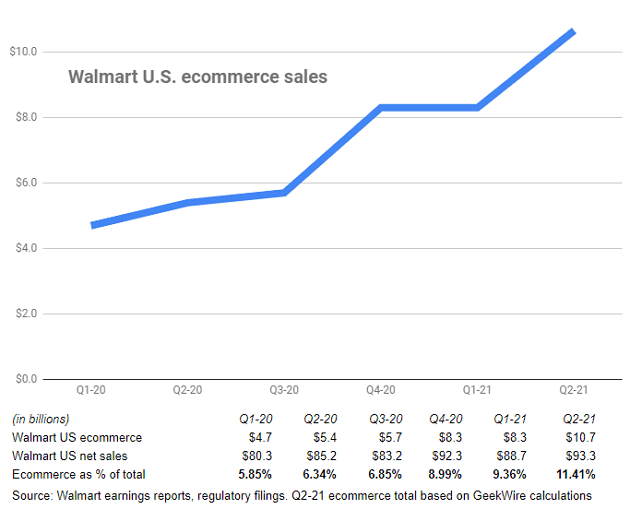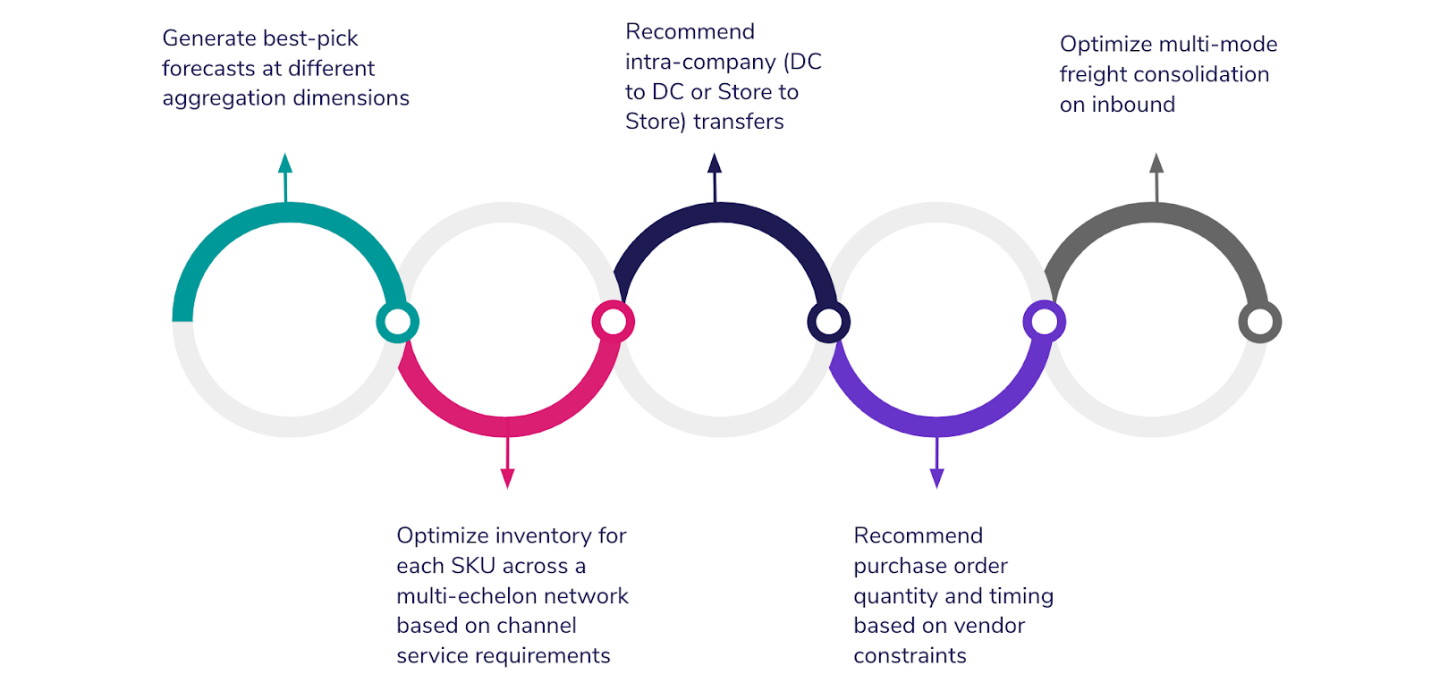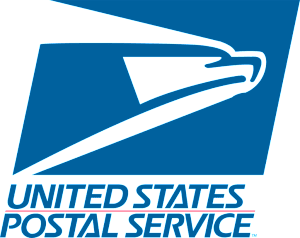 If 2020 and if 2021 proved anything, it’s that the omni-channel selling environment is here to stay. As physical stores opened, shut down and re-opened again, consumers became more flexible in the way they shop for, and purchase, just about every product. Consumers have gotten used to the convenience and ease of online shopping, home delivery, curbside pickup, buy online/pick up in-store and other alternatives to the traditional in-store shopping experience.
If 2020 and if 2021 proved anything, it’s that the omni-channel selling environment is here to stay. As physical stores opened, shut down and re-opened again, consumers became more flexible in the way they shop for, and purchase, just about every product. Consumers have gotten used to the convenience and ease of online shopping, home delivery, curbside pickup, buy online/pick up in-store and other alternatives to the traditional in-store shopping experience.
According to a recent article in Forbes, 48% of consumers today prefer a hybrid shopping model that combines online and in-store components. For example, they might browse products online, but visit a brick-and-mortar store to finalize their selection. This new behavior means that manufacturers and retailers need to anticipate consumer needs across channels with more accuracy than ever. They need to deliver the right product to the right location at the right time, flawlessly, to fulfill ever-more volatile demand patterns and shopping behaviors.
Another powerful omni-channel market force continues to be the “Amazon effect.” The mega online retailer accounted for a staggering 41.4% of all e-commerce sales in the US during 2021. A major reason for Amazon’s dominance is its rapid delivery capability; over 200 million consumers worldwide subscribe to its Prime subscription service, which offers same-, one- or two-day delivery for many products. To compete with Amazon, most retailers and manufacturers have had to dramatically shorten their own delivery windows.
Navigating an Increasingly Challenging Logistics Landscape
These e-commerce trends are placing increasing pressure on logistics teams to keep up with demand volatility, provide incredibly fast delivery, and reliably fulfill all their promises to customers and consumers. It’s challenging for logistics providers to keep up, even in perfect supply chain conditions.
But, as we know, supply chain conditions were far from perfect in 2020 and 2021. Just as the world of omni-channel selling is here to stay, supply chain disruptions also seem to have become the norm. Faced with port closures, labor shortages and COVID-19 related production shutdowns, the world’s logistics teams have fought valiantly to pick up and deliver products at all. Lacking visibility into real-time product location and status, they have struggled to make confident decisions, and reliable commitments, in an extremely uncertain environment.
Lacking clear information, retailers, manufacturers and their logistics partners frequently made less-than-profitable fulfillment and delivery choices in 2020 and 2021 that eroded their profit margins. It’s already been demonstrated that the sudden and dramatic shift to e-commerce, driven by the COVID-19 pandemic, resulted in a general loss of profitability for many companies. As just one example, Nike’s online sales grew by 75% in 2020 — but its profit margins fell from 45.5% to 37.3% due to the higher costs associated with online selling.
For most companies, margins only declined further in 2021, as product shortages and transportation roadblocks forced all supply chain participants to make critical decisions on the fly, acting without complete information or hard data. Manufacturers, retailers and their logistics partners often managed supply and demand volatility by shifting scarce inventory among stores or distribution centers, or investing in expedited freight charges, without considering the real implications of these strategies on their long-term profitability.
The New Imperative: Visibility, Followed by a Synchronized Response
How can logistics teams hope to more successfully, and profitably, navigate this challenging business landscape in the future? The answer lies in identifying supply chain disruptions — from a big event, like a port closure, to smaller day-to-day performance exceptions — at the earliest possible moment. Whether it means recognizing a skilled labor shortage at a specific warehouse today or anticipating a significant weather event next week, logistics professionals need to see exactly what is happening across the end-to-end supply chain, in real time.
The next step? Logistics decision makers need to identify the impacts of every exception on their operations, on their customer promises and, equally important, on their profit margins. Based on those impacts, they need to create a rapid, synchronized response across the end-to-end network that maximizes all outcomes to the greatest extent possible, bringing the supply chain back on track. They also need to communicate the disruption, and the planned response, to all stakeholders, including customers and consumers.
Logistics Digitalization Provides an Answer
This level of awareness and responsiveness may sound impossible to achieve, but advanced technology places it within the reach of every logistics team. By digitizing their end-to-end supply chains, including warehousing and transportation, logistics providers can monitor conditions in real time, recognize and communicate exceptions, conduct predictive analysis and drive a fast, synchronized response. As disruptive events occur along the digital thread, the entire organization can act in a fluid, connected manner to optimize costs, service levels and other outcomes.
Today’s advanced supply chain solutions far exceed the cognitive abilities of human planners and manual analysis to monitor supply chain conditions, recognize problems and orchestrate an optimal resolution. Enabled by artificial intelligence (AI), machine learning (ML), predictive analytics and optimization engines powered by proprietary algorithms, these solutions can often autonomously anticipate and resolve disruptions before they ever impact costs or service levels. While there are advanced digital solutions available that span the entire supply chain, logistics providers can particularly benefit from digitizing their transportation and warehousing capabilities.
Transportation: Moving to a Digital Environment
The transportation function has been dramatically impacted by supply chain disruptions in the past two years, thanks to headline-making events like port closures and driver shortages. While consumers are increasingly demanding fast, flexible delivery on their terms, transportation teams are facing significant challenges in accommodating this growing need.
Digital transportation management solutions can help by connecting the entire shipping network, including customers and carriers, in real time. As disruptions emerge anywhere in the digital thread that connects transportation assets and stakeholders, they are visible and immediately actionable. Often these solutions execute a seamless, autonomous response based on pre-defined objectives. In more complex situations, they gather the right data and the right decision makers in a “war room” environment where various resolution scenarios can be explored and initiated.
Given today’s compressed windows for fulfillment and delivery — and the frequency of disruptions — AI- and ML-enabled solutions, delivered in a software-as-a-service (SaaS) format, are the only reasonable way to manage the transportation function. These digital solutions make it easy, fast and seamless to manage the complexities of all the transportation function’s moving parts and keep the overall supply chain on an optimal course. As they enable flexible multi-mode delivery schemes, dynamic planning and re-planning, unified inbound and outbound logistics, and carrier collaboration, these solutions deliver a high return on investment.
Blue Yonder commissioned a study to examine the real-world financial benefits of advanced supply chain solutions, and the benefits are clear. In the resulting report, transportation managers cited a variety of powerful results, including closer relationships with carriers, seamless bidding and procurement, and more strategic carrier selection. While driving a projected $14.1 million in transportation savings for the typical $10 billion company over a three-year period, digital solutions also helped logistics teams increase their agility and responsiveness.
According to a recent survey conducted by Bringg, 99% of retailers plan to offer same-day delivery within the next three years, compared to just 35% today. In this climate, it is important to take actions to improve delivery responsiveness and speed.
Blue Yonder estimates that by digitizing transportation operations, companies can significantly and simultaneously improve customer service, eliminate their empty miles, increase asset utilization, and reduce their overall transportation spend — for both increased profitability and a significantly reduced environmental impact.
The Digital Warehouse, Fueled by Optimized Labor
In the warehouse, logistics providers are being asked to manage smaller orders and more specialized tasks with a scarce workforce. They are also exploring new distribution models, including micro fulfillment centers located closer to the ultimate consumer. Again, digitalization provides the answer to navigating this complexity. Advanced digital solutions make the labor workforce much more productive by reducing travel times, increasing throughput, improving fill rates and optimizing available human resources. They also provide a tightly connected environment in which robots, co-bots and other forms of automation can be optimally integrated with the human workforce.
Not only do advanced SaaS solutions increase real-time visibility of exceptions in the warehouse — and enable autonomous resolution for most events — but they also allow a granular, moment-by-moment assessment of labor productivity and task completion. Resources can be strategically re-assigned in real time as conditions change and, over the long term, associates can be coached to achieve continuous improvement.
The study projects a risk-adjusted $31.2 million in labor cost savings for the typical $10 billion company that leverages warehouse, transportation, and order digitalization. Just as important, digital warehouse solutions enable logistics companies to deliver on their customer commitments, reliably and profitability, even when faced with extreme labor shortages and high employee turnover rates. Based on hundreds of implementations, Blue Yonder believes that warehouse digitization can help the typical organization achieve <99% performance rates for on-time, in-full delivery and a significant increase in throughput — supporting one-hour fulfillment for the majority of orders.
Realizing the Promise of Digitalization
The world’s logistics teams are finding themselves at a critical crossroads, navigating an omni-channel landscape that’s unprecedented in its level of complexity and its number of competing priorities. On the one hand, logistics teams need to deliver greater levels of speed, service and flexibility than ever. But, on the other hand, they need to minimize resources and protect profit margins. The two core capabilities underlying logistics, warehousing and transportation, are among the largest cost centers in the entire supply chain, so the stakes are high.
More than ever, logistics professionals need to make key decisions on the fly, in real time. But they have to make the right decisions, targeted toward optimizing all outcomes. The only way to not only survive, but thrive, in this brave new world is by leveraging digitalization. Backed by the power of AI, ML, predictive analytics and autonomy, logistics teams can recognize issues and disruptions and execute an optimized, profitable resolution at digital speed — no matter what new challenges the future delivers.
Terence Leung is Senior Director, Solutions Marketing at Blue Yonder. He has a keen interest in digitalization and the value it generates throughout the supply chain. In this role, he leads his organization to drive thought leadership and go-to-market strategy for supply chain execution and logistics solutions. In addition, he works with customers to understand requirements and drive best practices in the digital journey.
Prior to joining Blue Yonder, Terence was the leader in product marketing and value engineering at One Network. Previously, he was in leadership positions in industry management at Savi Technology and solutions and management consulting at i2 and Deloitte Consulting respectively. Terence holds an MBA from the University of Texas, Austin and an Electrical Engineering degree from MIT.
















 Note: Today’s post is part of our “
Note: Today’s post is part of our “


 Last month I participated in Oracle’s
Last month I participated in Oracle’s 








